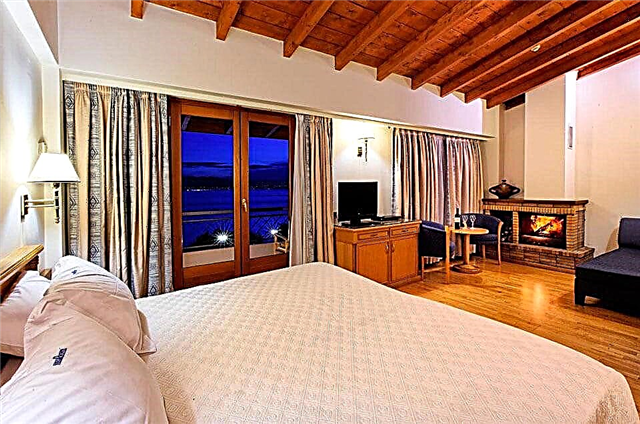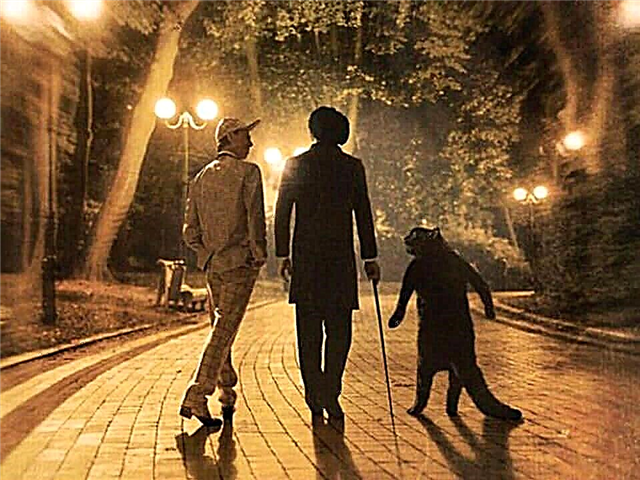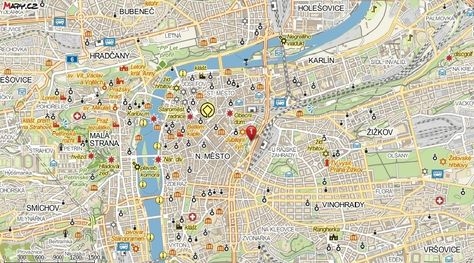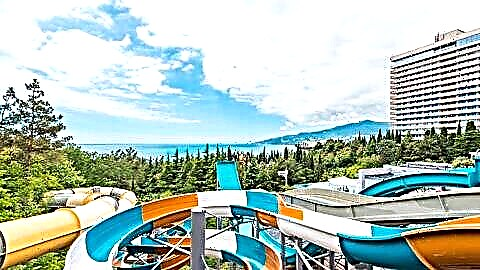An ancient men's monastery, located in the western part of Kostroma, stands alone among Russian monasteries. It stands out not only for its ancient history dating back to the XIV century. This monastery played a leading role in the formation of the tsarist dynasties of the Godunovs and Romanovs and today it preserves unique icons and values. It will be interesting not only for Orthodox pilgrims to visit it, but also for any educated person who wants to touch on Russian history.
History of the Ipatiev monastery
Researchers are inclined to believe that the monastery was created in 1330 with money allocated by a wealthy Tatar official Chet, which was heading through the Kostroma lands to Moscow in the service of Prince Ivan I (Kalita).

The Holy Trinity Ipatiev Monastery from a bird's eye view
There is a legend that on vacation, near the place where the Volga receives the waters of Kostroma, the Tatar Murza saw the Mother of God, the Apostle Philip and the holy martyr Hypatius. And Chet ordered to build a monastery on the river bank, and later he himself adopted Christianity under the name of Zacharius.
Chet-Zakhary became the progenitor of two most influential Russian surnames - the Saburovs and the Godunovs. It is known that the descendants of the founder of the monastery were devout and before their death they came to the monastery to take monastic vows and spend their last days here. Both of Boris Godunov's parents are buried within the monastery walls. And if Boris had not become the Russian sovereign, most likely, the Ipatiev Monastery would also have been his resting place. But many years have passed, and today only one of the three revered tombs has survived on the territory of the monastery.

View of the buildings of the Holy Trinity Ipatiev Monastery
Chronicles testify that in the XIV and XV centuries few people knew about the monastery on the bank of Kostroma. Its rise took place during the growth of the influence of the Godunov clan at the royal court. For five decades, from the middle of the 16th century, great work has been carried out here on the arrangement of the territory, and many monastery buildings were erected in stone. According to the customs of those times, the monastery was created as a fortress capable of repelling enemy raids. For this, the entire territory was surrounded by a reliable stone fence.
The Godunovs made the richest offerings to the monastery. They gave him precious handwritten books with silver and gilded frames, and also donated silver and gold liturgical utensils: dishes for funeral services, chalices, discos, bowls of water and stars. Today, some of these treasures can be seen in the capital - in the Armory, the Tretyakov Gallery and the Historical Museum, and some are kept in the museum collection - on the territory of the monastery itself.

View of the Holy Trinity Ipatiev Monastery from the Kostroma River
Troubled times became a severe test for the monastery. The first offensive of the Polish-Lithuanian troops of False Dmitry II, thanks to the militias from Galich, was repulsed. But in 1609, when the enemies were knocked out of the monastery for the second time, one of its walls was blown up. And from the powerful explosion, the Cathedral of the Life-Giving Trinity and two gates of the temple were badly damaged.
The year 1612 became a landmark not only for the monastery itself, but also for the entire state. It was this year, near the walls of the monastery, that the embassy from the capital presented a certificate of election as tsar to 16-year-old Mikhail Romanov. Over the next several decades, until the very end of the 17th century, the monastery was rebuilt and prospered. And work on its renovation was carried out by order and at the expense of the royal family. New monastery churches and buildings were erected by stone craftsmen who lived in the Bogoslovskaya and Ipatievskaya settlements.

From left to right: House Church of Chrysanthus and Daria, Trinity Cathedral, bell tower
The monastic brethren constantly created handwritten books of a religious nature - the gospels, the lives of saints and synodics. Here were kept valuable manuscripts brought from different parts of Russia and from abroad. In 1814, the famous Russian historian Nikolai Mikhailovich Karamzin managed to find in the library of the monastery a most valuable 15th century manuscript, created in Pskov, and later called the Ipatiev Chronicle. It describes the history of the formation of Russia from the beginning of the XII to the end of the XIII century.
From the end of the 17th century to the middle of the 18th century, the monastery experienced a half-century period of decline. Several large bells were taken from it to the capital for military needs. The authorities cut the money allowance for the monks, and for the first time the monastery itself began to be used as a place of exile. But in 1744 the monastery revived again. The residence of the Kostroma bishop was located on its territory, and after a while the Theological Seminary was even opened here.

Cathedral of the Life-Giving Trinity
Then representatives of the royal family began to visit the monastery. The first visits to the Kostroma monastery were made by Catherine II. And in the 19th century, the monastic brethren received all the ruling Russian sovereigns. Emperor Nicholas II visited the monastery several times and the last time he visited the monastery with his family during the celebrations dedicated to the 300th anniversary of the Romanov dynasty, which were celebrated throughout the Empire in 1913.
Since 1919, under Soviet rule, the monastery was closed, all the brethren were expelled from its walls, and the property was nationalized. Some of the monastery premises were given for museum needs, and in others, residents of the Kostroma suburb were settled.

House church of Chrysanthus and Daria
In the early 1920s, when the state expropriated church values from all Russian churches, all silver and gold items were taken from the monastery, which is over 14 kg of gold and 200 kg of silver. By the mid-30s of the last century, about seven hundred people already lived on the monastery territory, and some of the ancient temples were destroyed.
But since the mid-1940s, the attitude towards the ancient Russian monastery has changed. Finally, they began to perceive it as a cultural and historical value. A unique wooden church was transported here from the village of Spas-Vezhi, which was to be flooded by the new Gorky reservoir. And then a museum-reserve was created in the monastery and the people who lived there were gradually evicted.

Belfry of the Ipatiev Monastery
The revival of the Orthodox monastery began in the late 1980s. In 1989, the first service was held in the Trinity Cathedral, and two years later the monastery officially opened. The consecration of the entire restored territory took place in 2002. In addition, a unique church museum was revived within the monastery walls.
Architectural monuments on the territory of the monastery
The majestic Trinity Cathedral is considered the main temple on the monastery territory. The stone building, which appeared in the 60s of the 16th century, was preceded by the wooden Trinity Church - one of the very first monastery buildings. But the inexorable time did not spare the first stone cathedral either. It suffered greatly from the explosion during the siege in the Time of Troubles, and a decision was made to build a new brick church.

Catherine's Gate of the Ipatiev Monastery
The cathedral, which we can see today, was erected in the middle of the 17th century. This five-domed cross-domed church has a basement and is surrounded by a picturesque gallery. Its porch faces north from the richly decorated façade.
After the construction, the interior of the temple began to be painted. But two years later, a large epidemic of pestilence took place in Kostroma, and the painting was interrupted for almost three decades. The famous artel of masters under the leadership of Guriy Nikitin, the most famous monumentalist of that time, was finishing the isographic work in the cathedral. The frescoes are distributed in four tiers, and they are distinguished by the manner of painting typical of the Kostroma icon painters.

The chambers of the Romanov boyars
In the monastery you can also see the temple of Chrysanthus and Daria (1852-1863). This house church has a slender hipped roof. Most recently, Palekh masters completed large-scale works on painting it.And the main subjects of the frescoes were the arrival of ambassadors from Moscow to young Romanov and the introduction of Russian troops into Paris in 1814.
The monastery also has a belfry built in the 17th century, the Holy Gates with gate chapels (1767), the Bishops' Corps (17th century), and several towers on the monastery fence, erected in the middle of the 17th century. And the Church of the Nativity of the Virgin, lost during the years of the struggle of the Soviet regime with religion, was rebuilt anew in 2013.

Green Tower of the Ipatiev Monastery
Current state and visiting regime
The Ipatiev monastery is an active diocesan monastery for men, so one should behave in it in accordance with church rules and traditions. You can enter the territory and visit the Trinity Cathedral free of charge. Services in the monastery churches are held daily at 8.00 and 17.00.
You need to buy tickets to visit the museum. During the summer period (from May 1 to September 30) it is open from 9.00 to 18.00. In winter (from October 1 to April 20) - from 10.00 to 17.00. Photo and video filming on the territory of the monastery and in the museum is possible only on a paid basis. And inside the temples it is generally prohibited. Also, photography and video filming of monks and priests is not allowed.

Commemorative column
How to get to the Ipatiev Monastery
The monastery is located in Ipatievskaya Sloboda, on the street. Enlightenment, 1.
By car. The road from the capital to Kostroma takes 4.5-5 hours (346 km) and runs along the Yaroslavl highway and the M8 highway (Kholmogory). In Kostroma, cross the road bridge to the left bank of the Volga and turn onto st. Soviet. Along it, Tekstilshchikov Avenue and st. Ostrovsky should drive up to the road bridge across the Volga tributary - the Kostroma River. Ipatievskaya Sloboda is located on the right bank of the Kostroma River, and Beregovaya Street leads to it.

View of the New Town of the Ipatiev Monastery
By train or bus. From the Yaroslavsky railway station in Moscow to Kostroma, trains reach in 6.04-6.35 hours. In addition, from the Central Bus Station of the capital, located near the Shchelkovskaya metro station, you can get to Kostroma by regular buses (7 trips a day). This journey takes 6.50 hours. The Kostroma bus station is 1 km away from the railway station. From the city bus station to the monastery there is a bus and a route taxi number 14. Also, route buses number 4, 8, 11 and 38 reach Ipatievskaya Sloboda.
Attraction rating:











